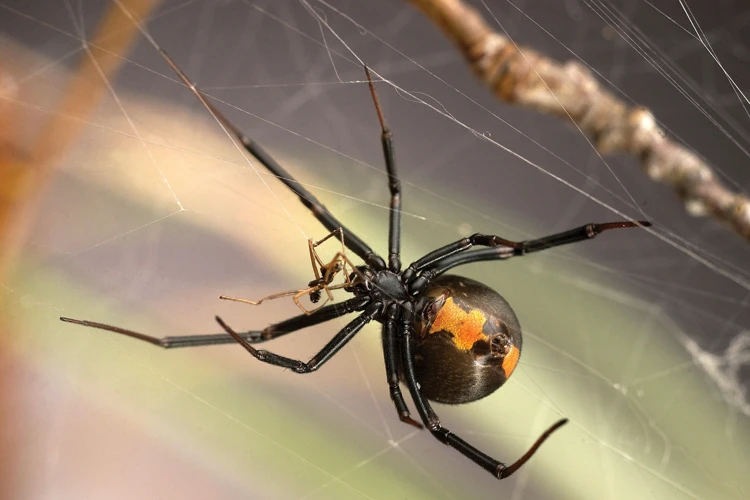The mysterious and deadly black widow spider has fascinated scientists and the public alike for generations. One of the key factors in the life cycle and behavior of this unique species is its habitat. In this article, we will explore the impact of habitat on black widow spider mating and survival. From the description of their habitats to the mating rituals and adaptations to their environment, we will delve into the fascinating world of black widows. We will also discuss the threats to their habitats and the consequences for their populations as a result. By the end of this article, you’ll have a better understanding of how these spiders have adapted to their surroundings and the challenges they face as their habitats continue to change.
Black Widow Spiders and Their Habitats
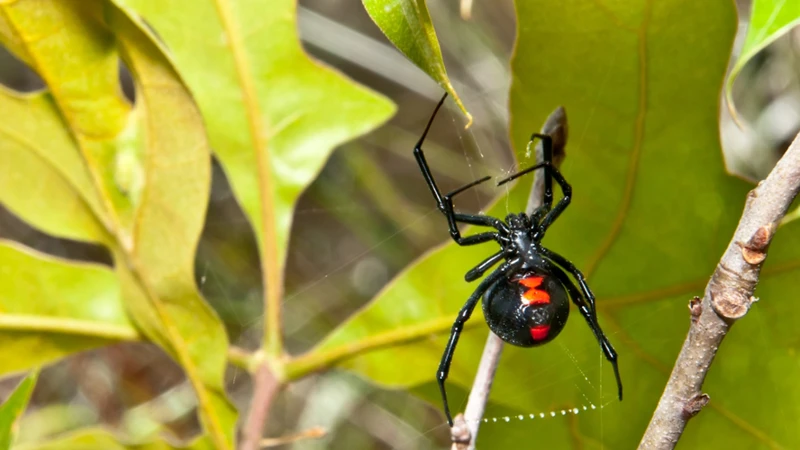
The Black Widow Spider is a fascinating and unique creature, known for its distinctive appearance and potentially deadly venom. However, its habitat is just as important to understanding its behavior and survival. From the range of its natural habitat to the adaptations it makes to thrive in its environment, the habitat of the Black Widow Spider is crucial to its existence. In this section, we will explore the different aspects of the Black Widow Spider’s habitat, from its description and range, to the effects that habitat has on its mating behavior and adaptations, as well as the threats that habitat loss poses to its survival. Understanding the relationship between the Black Widow Spider and its habitat is essential for comprehending its behavior and the factors that contribute to its success or failure.
Black Widow Spider Description
Black Widow Spider Description: Black Widow spiders (Latrodectus spp.) are a type of venomous spider known for their signature red hourglass marking on their abdomen. The females have a shiny black body while the males are smaller and lighter in color. These spiders have eight legs and an average body size ranging from 3/16 to 3/4 inches long. Their abdomen is round and larger than their cephalothorax, or head, which is covered in fine hairs.
| Common Name | Scientific Name | Size | Color |
|---|---|---|---|
| Black Widow Spider | Latrodectus spp. | 3/16 to 3/4 inches long | Shiny black body with a red hourglass marking on the abdomen |
Male Black Widow Spiders have a lighter color than females and are generally smaller in size. They are typically not dangerous to humans as they cannot penetrate the skin with their smaller fangs. However, females can be lethal to humans, and their venom can cause symptoms such as muscle spasms and cramps, abdominal pain, and nausea. It is important to exercise caution when encountering these spiders.
Habitat Range of Black Widows
Black widow spiders are predominantly found in warm regions, including Africa, Southern Europe, Asia, and the Americas. They are spread across different habitat types, ranging from deserts and forests to grasslands and wetlands. However, they mostly thrive in habitats with a warm and humid climate, where their prey is abundant. Specifically, black widow spiders prefer to dwell in dark and undisturbed places, such as under rocks, logs, and debris in outdoor areas, and in cluttered or unused spaces inside buildings.
Interestingly, black widow spiders have a unique habitat selection strategy, as they tend to choose the location with the highest prey availability and the lowest predator frequency. As such, some experts suggest that black widows may indirectly select their habitats through the prey population rather than directly selecting their preferred abode.
Despite their adaptability to different habitats, black widow spiders’ population size can vary across their range. Some factors that may affect their population levels in certain habitats include natural disasters such as drought or floods, changes in food or water availability, and the presence of predators and parasites.
Understanding the various factors that affect black widow spider population levels across different habitats can provide valuable insights into their mating behavior and adaptation strategies. To learn more about black widow spider mating behavior, check out our related article on black widow mating behaviors.
Mating Behavior of Black Widow Spiders
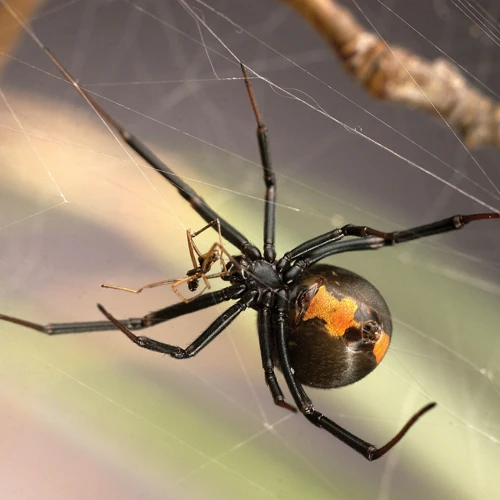
As one of the most notorious arachnids in the world, the mating behavior of black widow spiders is a subject of great curiosity and interest. The intricate rituals and strategies employed by these spiders during mating season are as intriguing as they are complex. Male black widows, for instance, have to compete fiercely with one another to secure a mate, while females need to ensure the best possible mate for their offspring. In this section, we will delve deeper into the mating behavior of black widow spiders, exploring their social interaction, reproductive strategies, and physiological changes during the mating process. For more information on specific aspects of black widow spider mating, be sure to check out our links on male black widow mating, pheromone usage, and cannibalism during the mating process.
Mating Season of Black Widows
Black Widow spiders have a well-defined mating season that typically begins in late spring and continues through early summer, roughly from May to July. During this time, male Black Widow spiders embark on the dangerous mission of finding a mate. They typically do this by wandering around the females’ webs and attempting to avoid being mistaken for prey.
Once the male Black Widow spider finds a female to mate with, he needs to quickly impress her before being eaten. Male Black Widow spiders have developed a range of strategies to do this, including courtship dances and silk-wrapping their potential partner. These strategies vary between species of Black Widow spiders and can be highly competitive.
It’s essential to note that the mating behaviors of Black Widow spiders in captivity may differ from those found in the wild. In captivity, Black Widow spiders are often kept in small confined spaces, which can lead to changes in their behavior. Read our article on mating Black Widow spiders in captivity to learn more about this topic.
Mating Rituals and Strategies of Black Widows
Black Widow spiders are known for their distinctive mating rituals and strategies. The female Black Widow spider is much larger and stronger than the male and they play an integral role in the mating process.
During mating season, male Black Widow spiders have to compete for the favor of the females. Mating competition among males is fierce and can be a matter of life and death. The winning male will mate with the female, while the losing males may become the female’s next meal.
To prevent the risk of inbreeding, the female Black Widow spider has developed a unique method of identifying viable male partners. Her preference is for males with certain characteristics, including body size and coloring, which indicate good genetic fitness. Prevention of inbreeding is crucial, as mating with a genetically weak male may affect the fitness of the offspring, leading to issues later on.
Once the ideal male has been selected, the Black Widow mating rituals begin. The courtship begins with the male approaching the female and initiating a series of movements and vibrations. The male also produces pheromones to attract the female. The mating duration of Black Widows is quite long, lasting for several hours.
During the mating process, the male Black Widow spider faces a great risk, as the female has a tendency to kill and even eat her partner afterwards. However, males have developed a survival strategy, which involves going limp and playing dead after mating. This helps to avoid the female’s aggression, increasing their chances of survival.
There are also physiological changes of Black Widow spiders during mating. Males experience a decrease in muscle mass and an increase in the number of cells in their hemolymph, which allows them to store sperm for future mating.
The mating rituals and strategies of Black Widow spiders are a complex and fascinating process. From the fierce competition among males to the identification of the ideal partner, Black Widows have developed unique mechanisms to ensure their survival and promote the fitness of their offspring.
Habitat Effect on Female Black Widow Spiders
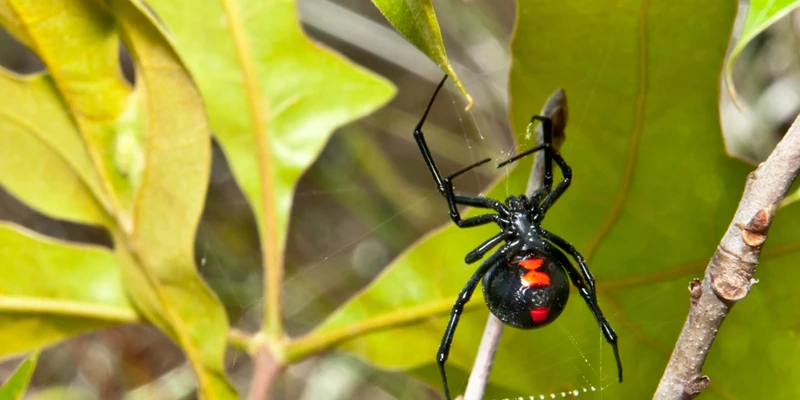
The impact of habitat on the behavior and physical traits of female black widow spiders is a fascinating field of study. Female black widows are affected by their surrounding environments in various ways, including changes in body size and reproductive success. Understanding how different habitats affect female black widow spiders is crucial for developing conservation efforts aimed at protecting these unique arachnids. In this section, we will explore the effects of habitat on female black widow spiders and how they adapt to their environments in order to survive and reproduce. But first, let’s take a closer look at the physical characteristics and habitat range of black widow spiders.
Effects of Habitat on Female Black Widow Body Size and Fecundity
The habitat of female black widow spiders has a significant impact on their body size and fecundity. Studies have shown that female black widows found in urban areas tend to be larger in body size and have a higher fecundity rate compared to those in rural areas.
Urban areas provide female black widows with a more abundant food source in the form of insects attracted to human structures and waste. This consistent food source allows them to grow larger in body size and produce more eggs. In contrast, female black widows in rural habitats have to rely more on hunting for prey, which may not always be in abundance, resulting in smaller body size and lower fecundity.
Female black widow spiders living in disturbed habitats, such as agricultural areas, have been found to have reduced body size and fecundity due to exposure to pesticides and other environmental toxins.
It is important to note that body size and fecundity are crucial factors in the reproductive success of female black widows. Largely due to the high risk of predation and cannibalism that female black widow spiders face, producing as many offspring as possible is vital.
The habitat of female black widow spiders plays a critical role in determining their body size and fecundity, which, in turn, affects their reproductive success and the survival of their offspring.
Effects of Habitat on Female Black Widow Mating Strategies
The habitat of female black widow spiders can significantly impact their mating strategies. This includes the location and availability of resources such as food, shelter, and potential mates. Mating strategies of female black widows are directly influenced by the availability of males in their habitat. In areas with a smaller mate pool, females tend to be less selective in their choice of mate, while in areas with a larger mate pool, females are more selective and may reject potential mates.
Another factor affecting female black widow mating strategies is the presence or absence of predators and competitors. Female black widows tend to be more selective in their choice of mate when predators or competitors are present, as selecting a high-quality mate becomes more crucial for reproductive success. Similarly, the availability of shelters also affects female black widow mating strategies. Female black widows tend to select male partners that offer more protective shelters, reducing the risk of predation during mating and increasing the chances of offspring survival.
In addition to these factors, the habitat of female black widows may also affect their physiological changes during mating, as well as prevent inbreeding. For example, in habitats with a low abundance of potential mates, female black widows may engage in longer mating durations to increase the chances of successful copulation and fertilization. Understanding the effects of habitat on female black widow mating strategies is crucial for conservation efforts to protect this species.
Internal link: Prevention of inbreeding in Black Widow Spiders
Habitat Effect on Male Black Widow Spiders
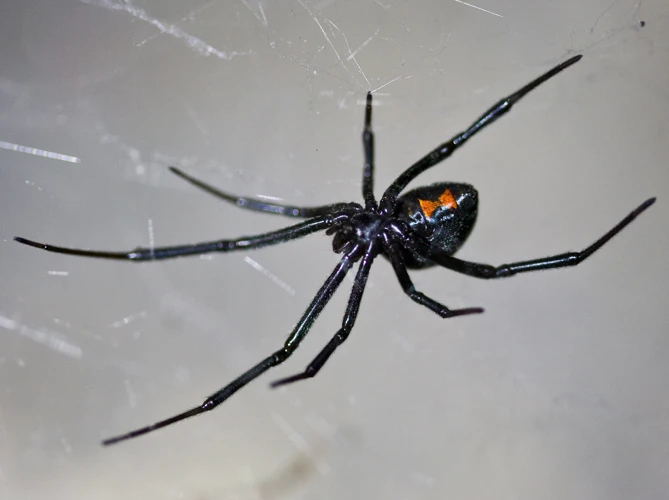
The habitat plays a crucial role in determining the population and mating dynamics of male Black Widow spiders. Male Black Widows adapt to their habitat to enhance their mating strategies, body size, and other physical changes for successful reproduction. However, the male Black Widows also face fierce mating competition, leading to physiological changes during mating. In this section, we will explore the impact of habitat on male Black Widow spiders and their mating dynamics, including the effects of habitat on their body size, mating strategies, and adaptations to enhance reproductive success. We will also discuss the threats to the male Black Widow population because of habitat loss and the implications for their survival. Learn more about male Black Widow spider mating here.
Effects of Habitat on Male Black Widow Body Size and Mating Strategies
The habitat of male black widow spiders also plays a vital role in shaping their body size and mating strategies. Studies have shown that male black widows living in urban areas tend to be smaller in size compared to those living in natural habitats. This is because urban areas have less availability of prey for the spiders, which leads to reduced nutrition during their growth and development stages.
Moreover, habitat plays a critical role in the mating strategies of male black widow spiders. In areas where the male competition is high, the males tend to be more aggressive towards each other in order to mate with the females. This is because male black widows have a higher mortality rate due to their tendency to be killed by the females after mating. Thus, the males try to mate as quickly as possible before being killed, and the competition among males is higher in areas with a high population of spiders.
On the other hand, in areas where the male competition is low, males tend to invest more time in courting females. They try to attract the females by performing elaborate courtship rituals, including dance movements and vibrations, to impress the females and increase their chances of mating. Once the male has successfully mated, they tend to leave the female and look for other mates.
In urban areas, the mating competition is higher due to the higher population density of black widow spiders. As a result, males have a higher tendency to become aggressive towards each other, increasing their chances of being killed by the females.
The habitat of male black widow spiders plays a critical role in determining their body size and mating strategies. While urban areas can lead to a higher risk of mortality for male black widows due to increased competition for mating partners, natural habitats provide a better environment and more opportunities for elaborate courtship rituals. For more information on male black widow mating competition and other physiological changes that occur during mating, click on the link for /male-black-widow-mating-competition/.
Adaptations of Black Widow Spiders to Their Habitats
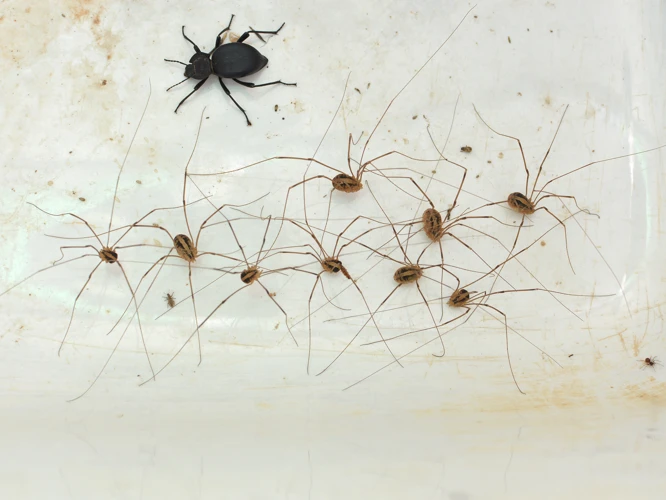
The survival of Black Widow Spiders in different habitats depends on their ability to adapt to those environments. These spiders have unique adaptations that allow them to thrive in their habitats. From their distinct colors to their intricate web-building skills, Black Widows have evolved to become masters of their surroundings. In this section, we will explore some fascinating adaptations that Black Widow Spiders possess, including camouflage and web-building techniques. These adaptations not only help them survive but also increase their chances of successful reproduction.
Camouflage as Adaptation to Habitat
One of the significant adaptations of black widow spiders to their habitat is the use of camouflage as a defense mechanism. Female black widows have a unique appearance that aids them in blending into the environment. They possess a shiny black body with distinctive red hourglass-shaped markings on their back. This pattern acts as a warning or signal to deter potential predators from attacking them. However, during hunting or while protecting their eggs and young ones, they prefer not to attract attention. Hence, they adapt their coloration and try to blend in with their surroundings by changing the color of their abdomen to match the prevailing color of their habitat.
To avoid detection from predators or prey, black widow spiders also remain motionless on their webs. This behavior allows them to blend in with their environment and avoid prey that might be alerted to their presence by movement. The silk they use to build their webs is also helpful in camouflage; the silk is tough and resistant, making it difficult for predators to see the spider’s web.
Another interesting behavior related to camouflage in black widow spiders is that of molting. After molting, spiders generally have a soft, vulnerable exoskeleton, and as a result, they usually hide in a secure part of their habitat until their exoskeleton hardens back. Black widow spiders also use this time to change their color to match the environment better. During molting, their bright markings disappear, making them even harder to detect, making it easier to hide from predators or prey.
Camouflage is an essential adaptation in the survival of black widow spiders in their habitat. It helps them to protect themselves from predators, hunt prey, and avoid being overpowered during mating. By changing the color of their bodies to match their surroundings, remaining still, and using strong silk to build their webs, black widows stay hidden and safe in their environment.
Web-building as Adaptation
The black widow spider is widely recognized for its unique adaptations to its environment, one of which is its web-building capability. The silk that the black widow spider produces is much stronger and more elastic compared to other types of spider webs, which makes it an ideal tool for catching prey. The black widow spider web-building process is an adaptation that helps it navigate and hunt in its habitat.
The Web-building process: The black widow spider web-building process is an intricate series of steps. The spider produces a unique, highly viscous silk that it uses to build the frame and lines of the web. The strands of the web converge at a central point, forming a spiral pattern. At the center of the spiral, the spider creates its egg sac and takes refuge. The web is strategically placed in areas with high prey traffic, and the spider lies in wait for its prey to get ensnared.
Advantages of web-building: The black widow spider’s web-building adaptation provides many benefits to its survival. The strength and elasticity of its silk allow it to trap even large prey, including other spiders, which it can kill and consume. The web also serves as a safe haven for the spider while it lays its eggs and protects its young from predators.
Significance for reproduction: The black widow spider’s web-building capability also plays a vital role in its mating strategy. The male spider, when seeking a mate, carefully approaches the female’s web without getting trapped. Once close enough, he sends vibrations throughout the web to identify himself to the female. If the female accepts and comes out of the egg sac to mate, the pair engages in a precarious dance, with the female often turning toward the male with her mouth open, which he has to avoid. The web provides a platform for these courtship rituals and makes it possible for the male and female to interact without risking direct contact.
Undoubtedly, the black widow spider’s web-building adaptation is one of the essential tools in its arsenal for survival in its habitat. Unfortunately, habitat loss due to factors such as urbanization and agriculture puts the spider’s future survival at risk. Climate change has put added pressure on spider populations dependent on specific environmental conditions. If left unchecked, the loss of habitat could push this unique arachnid species toward extinction.
Internal link: If you want to learn more about the physiological changes of black widow spiders during mating, check out our article on “Physiological Changes in Black Widow Spiders During Mating”.
Threats to Black Widow Spider Populations Due to Habitat Loss
As human populations continue to expand and urbanize, natural habitats for many species are destroyed or altered. Unfortunately, black widow spiders are among those affected by habitat loss. Loss of habitat means that these spiders are losing the places they need to survive and reproduce, putting their populations at risk of decline. Habitat destruction can also lead to several other threats to black widows such as increased predation, competition, and exposure to pollutants. The effects of which leave them vulnerable and can have severe and long-lasting impacts on their populations. It’s important to understand the threats to black widow populations, so we can take actions to conserve their habitats and prevent further decline.
Habitat Destruction for Urbanization and Agriculture
The habitat of black widow spiders is in danger due to habitat destruction for urbanization and agriculture. The destruction of habitats for human development and land use is one of the main threats to the black widow population, as it limits the availability of suitable habitats for the spiders to survive and mate in.
Urbanization: The expansion and development of cities often leads to the destruction of natural habitats, including those of black widow spiders. Urban areas lack the typical conditions that the spiders need to thrive, such as natural vegetation, rock formations, and small bodies of water. As a result, black widow populations are often displaced or forced to adapt to urban habitats, which can be detrimental to their survival.
Agriculture: The expansion of agriculture is another major threat to black widow habitats. Large-scale farming and monoculture practices lead to the destruction of natural habitats, deforestation, and the use of pesticides that negatively affect the spiders and their prey. This not only affects the black widow spider populations but also disrupts the balance of the ecosystem.
In recent years, the decline in black widow populations has been attributed to the destruction of their habitats. As a result, measures are being taken to conserve their habitats and promote biodiversity. Efforts are being made to create alternative habitats for the spiders, including open parks and green spaces within urban areas.
Link: The destruction of habitats for black widow spiders can have unfortunate consequences. Not only can it lead to declining populations and negatively affect the ecosystem, but it can also have a significant impact on the mating rituals of the spiders. If you’re interested in learning more about the mating rituals of black widows, click here.
Climate Change and Its Effects on Habitat of Black Widows
Climate change is a pressing issue that is affecting habitats and ecosystems all around the globe. Black widow spiders are no exception to this phenomenon and are experiencing the effects of climate change. The rising temperatures and alteration of precipitation patterns are causing changes in the plant communities and insect populations that make up the black widow spider habitat. This, in turn, will have a significant impact on the survival and reproduction of black widow spiders.
Impact of rising temperatures
One of the primary effects of climate change on black widow spider habitat is the increase in temperature. As temperatures rise, the distribution of black widows will shift towards higher latitudes. This could result in the displacement of black widow spider populations from their current habitat, resulting in a loss of genetic diversity and reducing the chances of adaptation to new environmental conditions.
Altered precipitation patterns
Altered precipitation patterns resulting from climate change could also affect the distribution and abundance of black widow spiders. Increased rainfall in some areas could provide better living conditions for the prey of black widows, increasing their numbers and thereby increasing the number of black widows. Conversely, in areas experiencing drought or low precipitation, the prey population could be adversely affected, with knock-on effects on black widows.
Internal link to an anchor
Climate change could also disrupt the breeding behavior of black widows. According to a recent study, the frequency of male cannibalism by female black widows was influenced by temperature fluctuations. An increase in temperature led to a decrease in the frequency of such incidents. Nonetheless, global warming could also lead to increased instances of male cannibalism by female black widows which is widely known to occur during mating. If you want to know more about this topic, check out our article on why black widow spiders sometimes kill their partners.
Climate change is having an impact on the habitat of black widow spiders. The shift in temperature and altered precipitation patterns have the potential to affect the distribution and breeding behavior of black widows, and could lead to a decline in their population. It is therefore vital that we take measures to reduce our carbon emissions and slow down the negative effects of climate change.
Conclusion
In conclusion, the impact of habitat on black widow spider mating and behavior cannot be overstated. Female black widows are especially affected by the quality of their habitat, with their body size and reproductive success closely linked to the availability of resources and mating opportunities. Male black widows, on the other hand, face challenges in finding receptive females and may adapt their body size and mating strategies accordingly.
Despite their adaptations to different habitats, black widow spiders still face threats from habitat loss due to urbanization and agriculture. Climate change is also a significant concern, as it may disrupt the natural distribution of black widow habitats and lead to declines in their populations.
It is important for further research to explore the specific mechanisms of how different habitats impact black widow mating and behavior, as well as to identify conservation measures that can alleviate the pressures of habitat loss and climate change. Moreover, it is essential for the public to be educated about the role of black widow spiders in the ecosystem and the importance of preserving their habitats for the benefit of not only these spiders but also other species that rely on them for food and ecosystem services.
In summary, black widow spiders and their habitats are complex and intriguing subjects with significant implications for both scientific research and conservation efforts. As we continue to unravel their mysteries and work towards a sustainable future, we should always remember the critical role that these spiders and their habitats play in maintaining the delicate balance of our natural world.
Frequently Asked Questions
What is the black widow spider and where is it found?
Black widow spiders are venomous spiders that are found throughout the world in warm and temperate regions, often in secluded, dark areas.
How can you identify a black widow spider?
Black widow spiders have a distinct black body color with a red hourglass shape on their abdomen. Females are larger than males and also have a wider abdomen.
When is the mating season for black widow spiders?
The mating season for black widow spiders is typically in the summer months, from June to September.
What are the mating rituals and strategies of black widow spiders?
During mating, the male black widow will approach the female and tap on her web to signal his interest. The female may then attack, but if she accepts the male, they will mate. Some male black widows use a strategy called “sneaky mating” where they approach the female when she is preoccupied with her prey, and quickly mate before being detected.
What effects does habitat have on female black widow spiders?
Habitat can affect the body size and fecundity (ability to produce offspring) of female black widow spiders, as well as their mating strategies.
How does habitat affect male black widow spiders?
Habitat can also affect the body size and mating strategies of male black widow spiders.
What adaptations do black widow spiders have to their habitats?
Black widow spiders have adapted to their habitats by using camouflage to blend into their surroundings and by building webs in secluded areas for protection and capturing prey.
What is the threat to black widow spider populations due to habitat loss?
Habitat loss due to urbanization and agriculture can pose a threat to black widow spider populations, as well as the effects of climate change on their habitats.
Are black widow spiders dangerous to humans?
While black widow spiders are venomous, they typically only bite humans when they feel threatened and the bites are rarely fatal. Symptoms of a black widow spider bite include muscle spasms, cramping, and sweating.
Can black widow spider venom be used for medical purposes?
Yes, black widow spider venom has been found to contain compounds that can be used for pain relief, muscle spasms, and treatment of neurological disorders.

